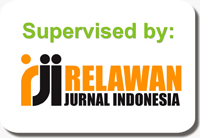Pengembangan Aplikasi Pelayanan Dokumen untuk Mahasiswa
DOI:
https://doi.org/10.31961/eltikom.v6i2.555Keywords:
Document Service Application, Document Tracking, Spiral Model, Student DocumentsAbstract
Document services are often found in government and education environments. Document service aims to produce a document as evidence or validation of something according to the request of the applicant. The document service process often does not run smoothly because there are obstacles such as the number of applicants, limited space, and limited service time. In the modern era like today, these problems can be solved by making a special application for document services in order to make it easier for applicants to submit files to the service unit. This study aims to design and build a document service application to assist applicants in requesting document services. The main feature in the application that was built is that applicants can submit the required files online without having to queue. In addition, the application that was built also has a unique feature, namely that document files that have been submitted are automatically forwarded to the related unit. This feature can assist service units in managing documents, because the requirements file does not need to be submitted manually. There is an additional feature in the form of a document service process tracking system so that applicants can see the development of services directly. The application was developed using the Spiral Model. There are four stages carried out in this model. The four stages are planning, risk analysis, development as well as testing, and evaluation. In the final stage, an application evaluation is carried out by applying the ISO 9126 standard. Based on the results of user assessments, the level of user satisfaction in terms of usability is 77.43%, functionality 78.95%, and efficiency 77.86%.
Downloads
References
W. Sunindyo, B. Hendradjaya, G. A. P. Saptawati, and T. E. Widagdo, “Document tracking technology to support Indonesian local E-governments,†in Lecture Notes in Computer Science (including subseries Lecture Notes in Artificial Intelligence and Lecture Notes in Bioinformatics), 2014, vol. 8407 LNCS. doi: 10.1007/978-3-642-55032-4_33.
S. Ramadhani, F. Hermawanto, and A. Mariani, “Aplikasi Pelayanan Surat Menyurat Desa Tanah Putih Berbasis Web,†Jurnal Teknologi Informasi Indonesia (JTII), vol. 3, no. 2, 2019, doi: 10.30869/jtii.v3i2.265.
M. A. Nur, N. Wardhani, and M. A. Nur, “Sistem Infomasi Pelayanan Aduan Persampahan dan Lingkungan Hidup Kabupaten Bulukumba Berbasis Android,†JURNAL IT, vol. 10, no. 3, 2020, doi: 10.37639/jti.v10i3.147.
“Aplikasi Pelaporan Pelanggaran dan Pelayanan Publik di Lingkungan Universitas Sam Ratulangi Berbasis Mobile,†Jurnal Teknik Informatika, vol. 15, no. 2, 2020, doi: 10.35793/jti.15.2.2020.29535.
H. Kusmiati and M. Ansori, “Aplikasi Pemasangan Layanan Reguler Smart PT.PLN (Persero) menggunakan Spiral Model,†JSM STMIK Mikroskil, vol. 16, no. 1, 2015.
G. L. Anakotta and S. Adhy, “Perancangan dan Implementasi E Commerce Dengan Segmentasi Harga Menggunakan Metode Pengembangan Spiral (Studi Kasus: CV. Citra Mandiri …,†Jurnal Masyarakat Informatika, vol. 9, 2017.
N. T. S. Saptadi, P. Chyan, and A. C. Pratama, “Analysis and Design of Waste Management System Using the Spiral Model Towards Smart Cities,†SISFORMA, vol. 6, no. 2, 2020, doi: 10.24167/sisforma.v6i2.2313.
A. Bahtiar, R. R. Muhima, and A. Rachman, “Penerapan Model Spiral Pada Rancang Bangun Game Platformer,†Seminar Nasional Sains dan Teknologi Terapan, vol. VII, no. 1, 2019.
R. Pakaya, A. R. Tapate, and S. Suleman, “Perancangan Aplikasi Penjualan Hewan Ternak Untuk Qurban Dan Aqiqah Dengan Metode Unified Modeling Language (UML),†Jurnal Technopreneur (JTech), vol. 8, no. 1, 2020, doi: 10.30869/jtech.v8i1.531.
A. Elzamly and B. Hussin, “Modelling and Managing Software Implementation Project Risks with Proposed Mining Technique Math-ematical Modelling Of Optimum Way Point Path Planning Using Uav Drone Navigation In Image Acquisition View project Cloud computing View project,†2014. [Online]. Available: https://www.researchgate.net/publication/263441620
I. Kurniawan, Humaira, and F. Rozi, “REST API Menggunakan NodeJS pada Aplikasi Transaksi Jasa Elektronik Berbasis Android,†JITSI : Jurnal Ilmiah Teknologi Sistem Informasi, vol. 1, no. 4, 2020, doi: 10.30630/jitsi.1.4.18.
M. W. R. Fakhrun and S. F. S. Gumilang, “Rancangan Web Service Dengan Metode Rest Api Untuk Integrasi Aplikasi Mobile Dan Website Pada Bank Sampah,†Konferensi Nasional Sistem Informasi, 2018.
P. Bourhis, J. L. Reutter, and D. VrgoÄ, “JSON: Data model and query languages,†Information Systems, vol. 89, 2020, doi: 10.1016/j.is.2019.101478.
N. L. G. P. Suwirmayanti, I. K. A. A. Aryanto, I. G. A. N. W. Putra, N. K. Sukerti, and R. Hadi, “Penerapan Helpdesk System dengan Pengujian Blackbox Testing,†Jurnal Ilmiah Intech : Information Technology Journal of UMUS, vol. 2, no. 02, 2020, doi: 10.46772/intech.v2i02.290.
R. Djouab and M. Bari, “An ISO 9126 Based Quality Model for the e-Learning Systems,†International Journal of Information and Education Technology, vol. 6, no. 5, pp. 370–375, 2016, doi: 10.7763/IJIET.2016.V6.716.
P. D. A. Pamungkas, “ISO 9126 Untuk Pengujian Kualitas Aplikasi Perpustakaan Senayan Library Management System (SLiMS),†Jurnal RESTI (Rekayasa Sistem dan Teknologi Informasi), vol. 2, no. 2, 2018, doi: 10.29207/resti.v2i2.398.
A. Rachman, Andreansyah, and Rahmi, “Implementation of Incremental Models on Development of Web-Based Loan Cooperative Applications,†International Journal of Education, Science, Technology, and Engineering, vol. 3, no. 1, 2020, doi: 10.36079/lamintang.ijeste-0301.105.
N. F. Rozi, M. Ruswiansari, A. Rachman, S. R. Wardhana, and L. Istiyanto, “The Development of LIDI: A Web-Based Car Rent Mar-ketplace Application in Sidoarjo, Indonesia,†in IOP Conference Series: Materials Science and Engineering, 2019, vol. 462, no. 1. doi: 10.1088/1757-899X/462/1/012052.
Downloads
Published
How to Cite
Issue
Section
License
Copyright (c) 2022 Jurnal ELTIKOM : Jurnal Teknik Elektro, Teknologi Informasi dan Komputer

This work is licensed under a Creative Commons Attribution-NoDerivatives 4.0 International License.
All accepted papers will be published under a Creative Commons Attribution 4.0 International (CC BY 4.0) License. Authors retain copyright and grant the journal right of first publication. CC-BY Licenced means lets others to Share (copy and redistribute the material in any medium or format) and Adapt (remix, transform, and build upon the material for any purpose, even commercially).




